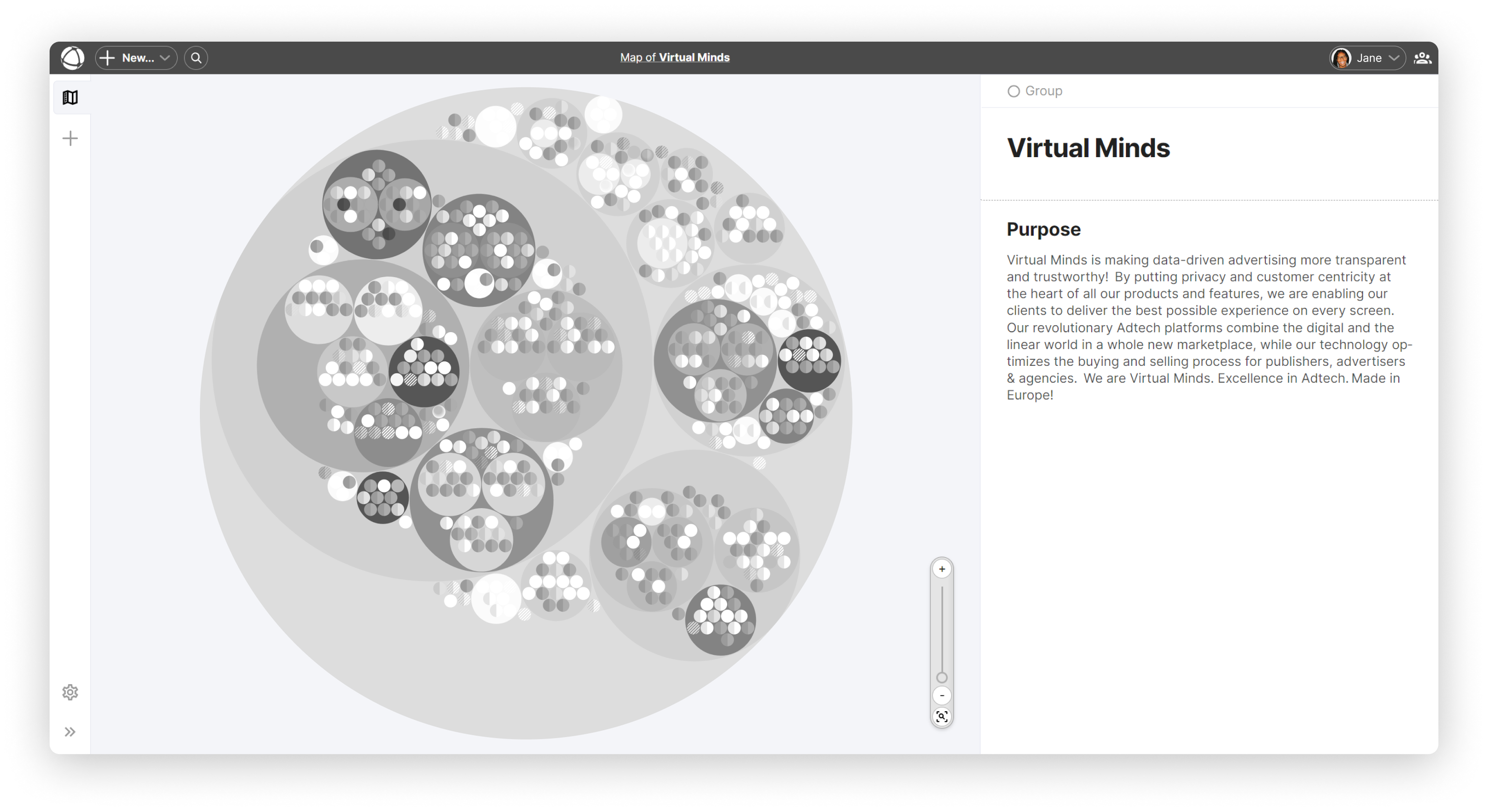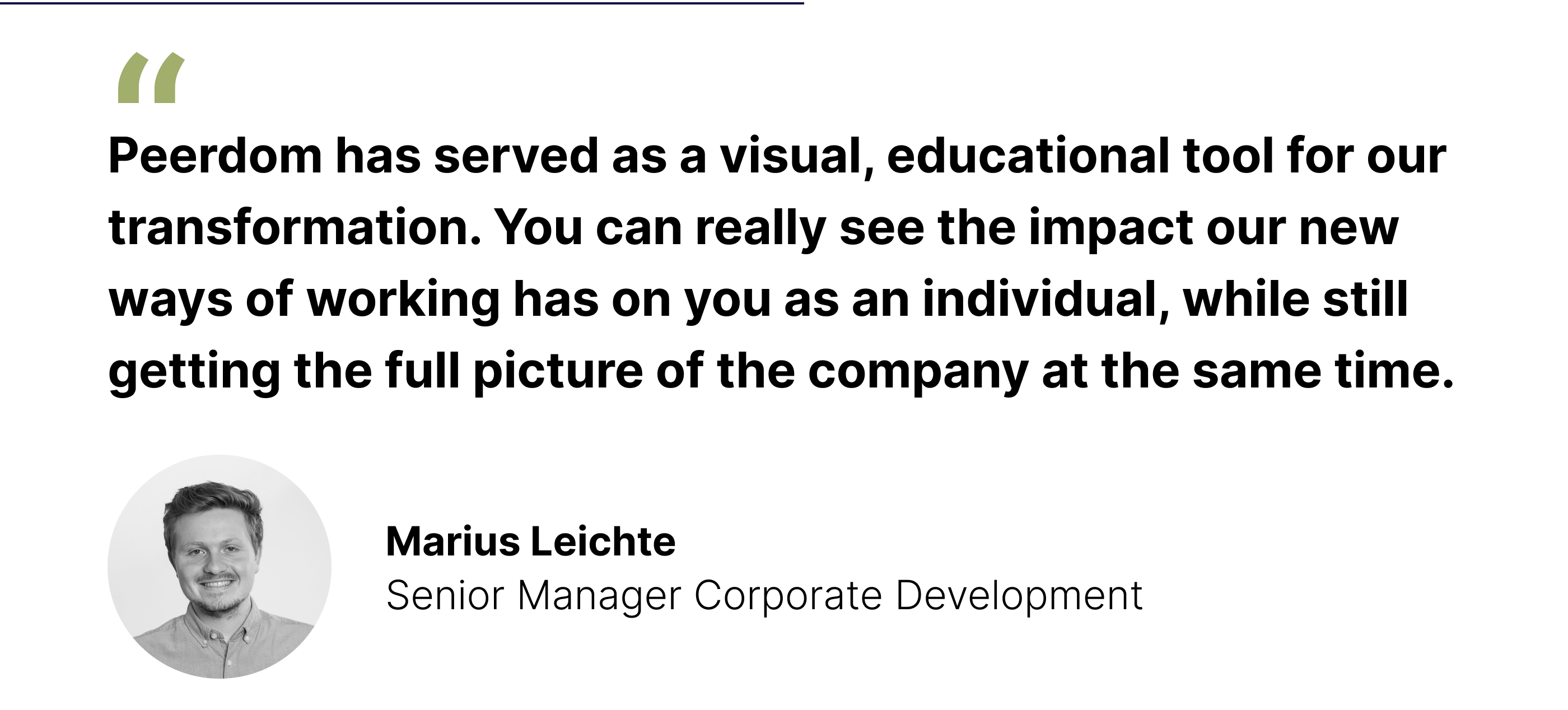Merging four organizations and working in new ways
Discover how the AdTech provider managed a four-way merger in mere months all while adopting a new role-based company structure.

Marius Leichte and the corporate development team at AdTech firm Virtual Minds faced uncharted territory last year. They were about to merge four organizations within a few short months.
What’s more, Virtual Minds planned to introduce a roles-based, flatter and more fluid approach to working together. This new way of working would put the German company on the cutting edge, but at their size it also raised the prospect of a chaotic workplace culture. Virtual Minds employs around 200 people and is a subsidiary of media company ProSiebenSat.1 Media.
The twin challenges of a merger and a cultural transformation meant Marius and his peers confronted an uncertain future with few guideposts. That’s where Peerdom came in handy, says Marius, the company’s senior manager for corporate development.
The interactive visual map made granular job tasks more transparent and included features for the company to standardize role descriptions, Marius says. In effect, Peerdom’s mapping tool helped Virtual Minds navigate the novel landscape, Marius says.
“It’s intuitive,” says Marius, who runs Virtual Minds’ organizational development team. “It acts as the Google Maps of our organization.”

A critical tool for merging and a catalyst for change
Bringing together any two companies is a daunting enough challenge. Figuring out who actually works on what tasks, what competencies lie in-house, and how to combine, redefine, or eliminate roles is difficult. Doing this for four organizations at the same time was an even bigger puzzle.
Employees were uncertain about the merger, and remote working conditions required by the Covid pandemic made it more difficult than usual to communicate effectively, Marius recalls.
Peerdom helped solve these problems. The work map introduced new co-workers to one another and provided clarity around how the newly merged company would work together in a role-based way. In effect, it acted as a catalyst as Virtual Minds moved towards a more decentralized form of decision-making.
Traditional corporate structures often define jobs by titles and chains of command. In contrast, Virtual Minds wanted to break down work into more specific duties, encourage cross-functional collaboration, and enable frontline workers to make more decisions within their roles. Adopting this role-based design—especially while going through a merger—made it vital to show each employee what the changes would concretely mean for their individual work, Marius says.
The transparency that the work map and peer profiles provide on everyone’s roles, goals, responsibilities, projects, and relationships has been important to the successful transformation at Virtual Minds, he says.

Balancing flexibility and standardization
One of the challenges of redesigning work as a collection of roles across self-managed teams is the possibility of chaos as organizations grow large. Enabling individuals and teams to autonomously define their roles and responsibilities can lead to confusion as people may describe the same duties or roles with different language. This is also true as you merge two different companies together – two roles may appear to be different, when actually they’re the same. Failing to merge roles is a missed opportunity for learning and knowledge transfer across colleagues.
Marius and his teammates faced this difficulty and had seen it in other companies that had adopted a role-based organizational approach. “As you grow bigger, it can get to be a mess,” he says.
Marius says that some of Peerdom’s features have helped Virtual Minds avoid a chaotic work map. The work map balances flexibility with standardization to manage growing complexity, he says. Virtual Minds uses Peerdom’s role “mirroring” capability to quickly duplicate a standardized role with common terminology. Virtual Minds has used role mirroring for more than 50 team members, linking people together from across the entire organization by their common responsibilities.
What’s more, Marius notes, Peerdom’s access rights categories helped to restrict who could make edits to the Virtual Minds work map—reducing the risk of unintended and confusing restructuring.

A game-changer
After completing the four-way merger and moving to a role-based approach to work, Virtual Minds is seeing the first positive impacts of the new way of working. For example, the company has been able to launch new initiatives and projects that wouldn’t have been possible before, Marius says. These include an improved ability to tackle larger technical and business challenges.
The success of the merger and transformation wasn’t guaranteed, given the daunting set of challenges Virtual Minds faced a year ago. Marius believes sharing information openly was vital in terms of helping employees understand the new organization and its new way of working. Peerdom and its intuitive visualization played an important role in enabling that transparency, Marius says.
In fact, the work map has many fans at Virtual Minds.
Marius tells the story of a colleague who helped design the role-based transformation at the company. One day, the colleague called Marius to applaud him and his team for having selected Peerdom, and, as a result, having elevated the general transparency and internal alignment at Virtual Minds.
“Thank you, guys,” the team member said to Marius. “This is a game-changer.”
Ed Frauenheim is a writer, speaker and consultant. He has published more than 50 stories on great workplace cultures in Fortune and co-written books including A Great Place to Work For All and Reinventing Masculinity: The Liberating Power of Compassion and Connection.